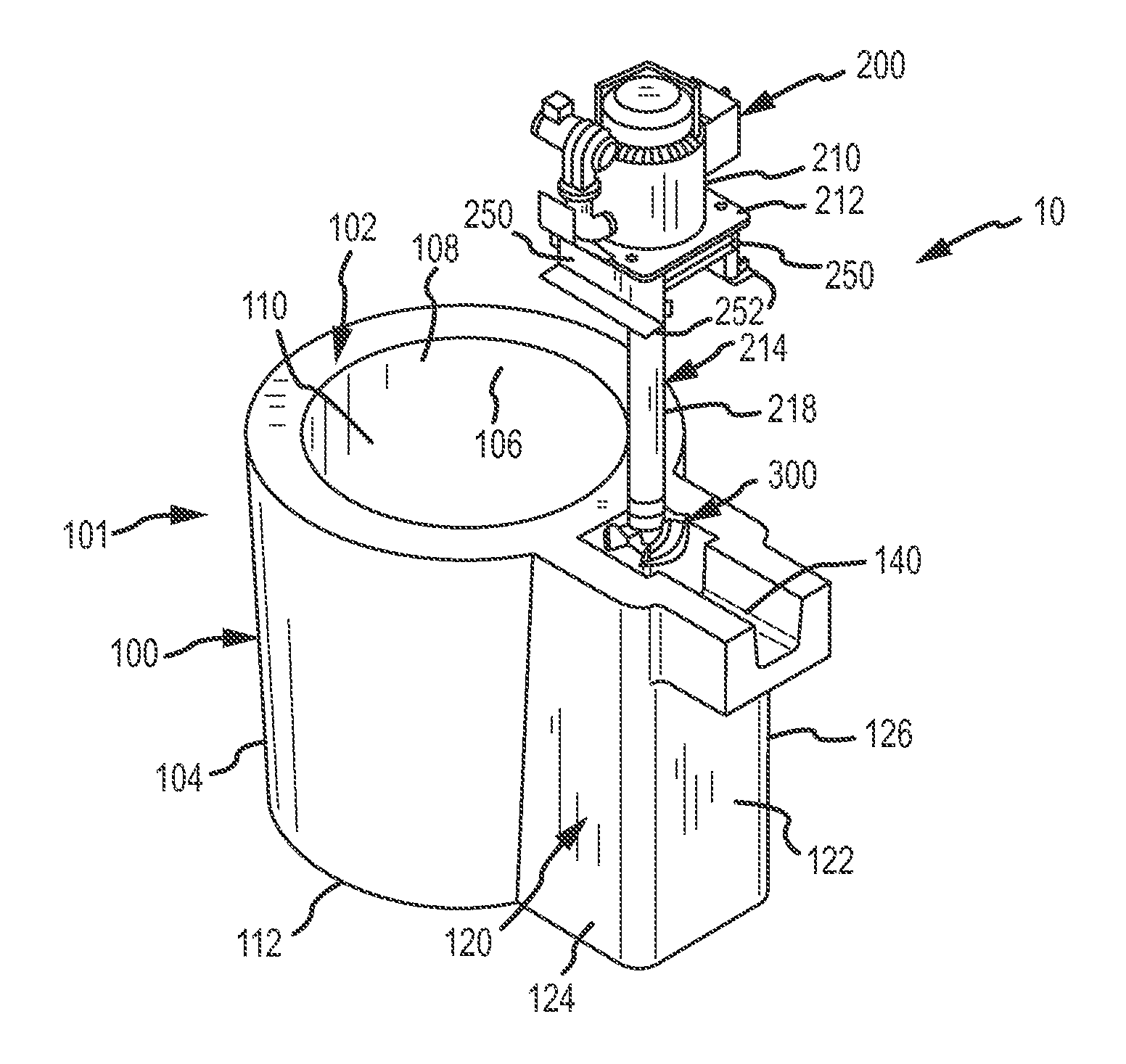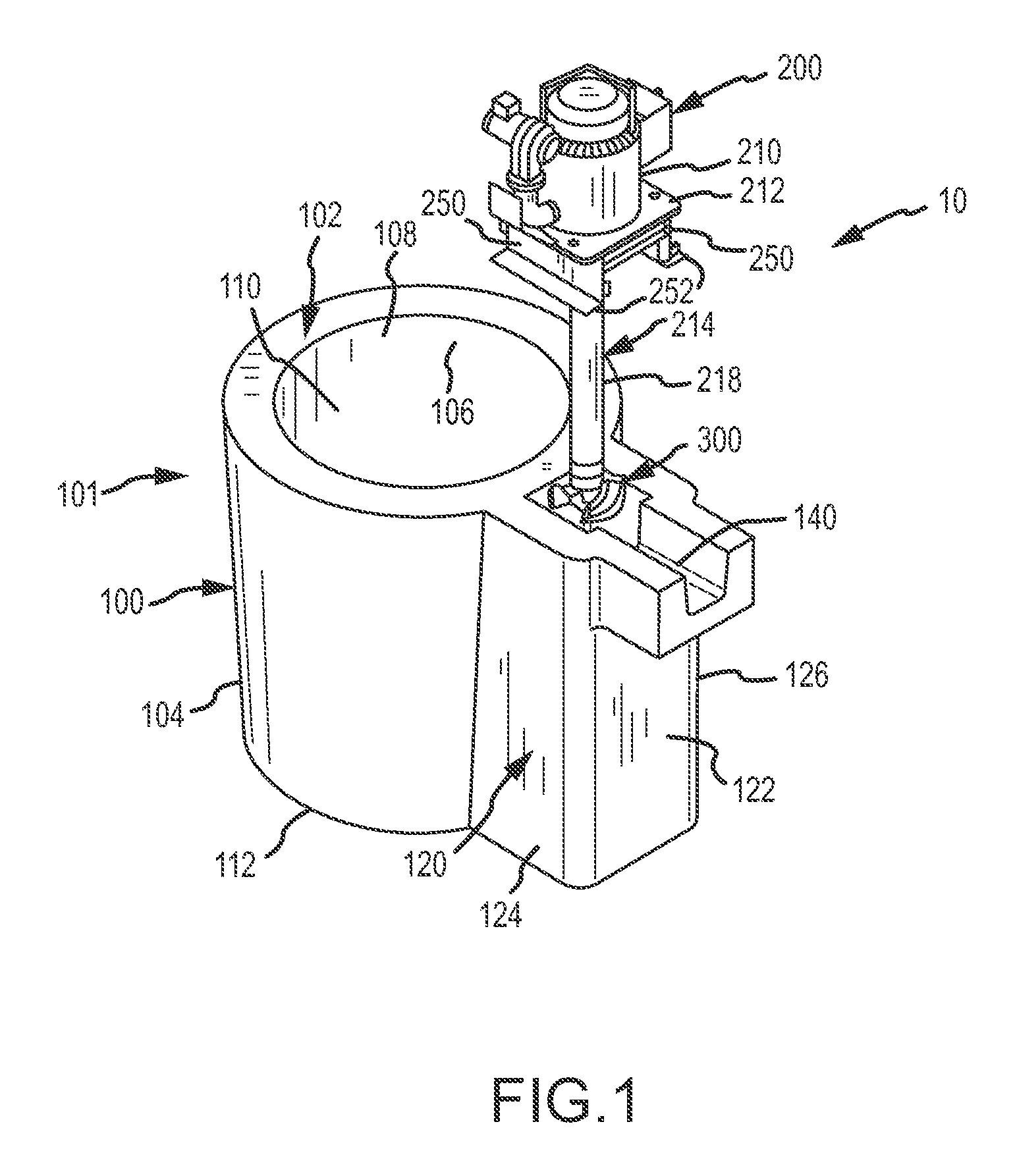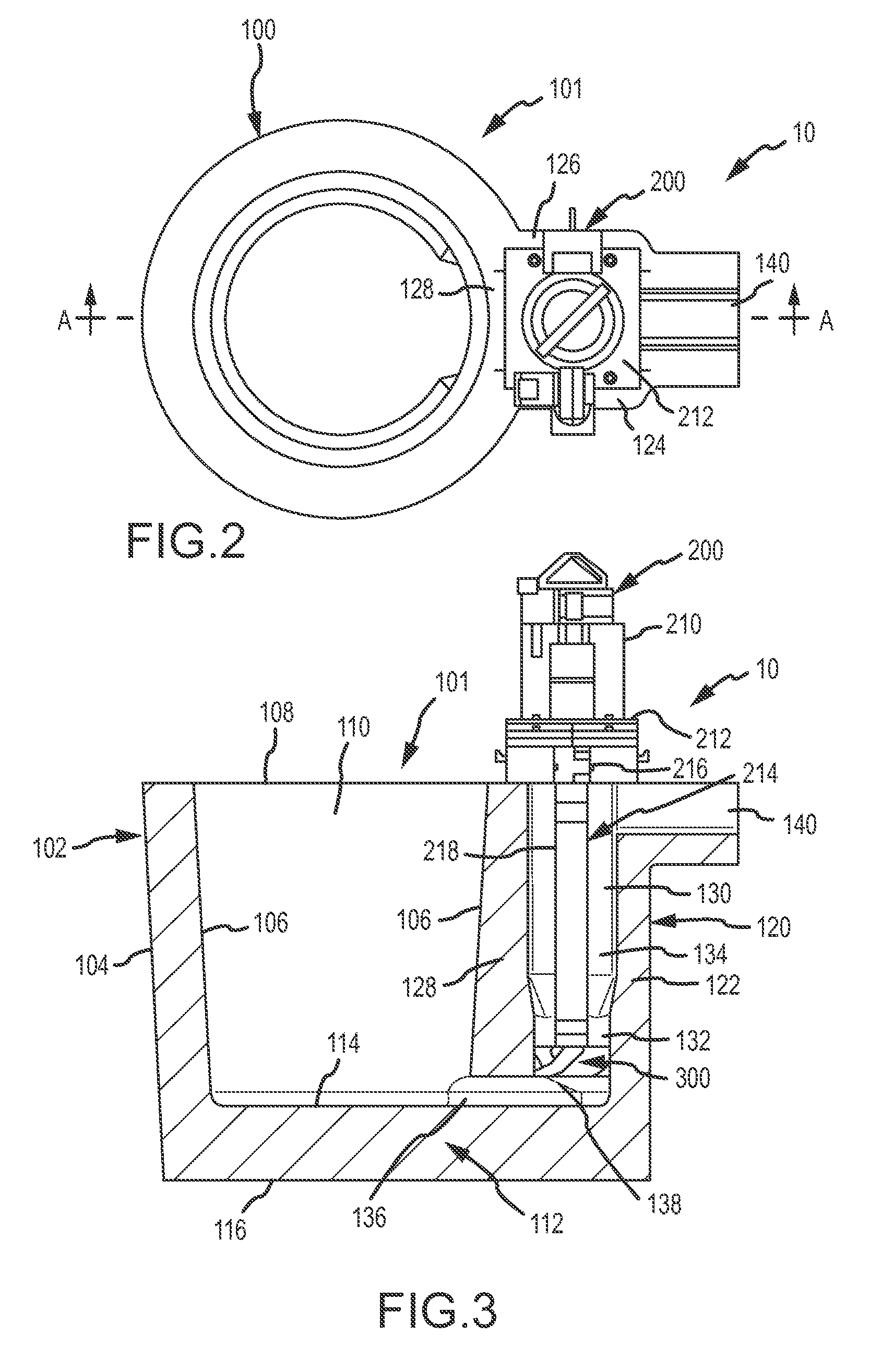Ladle with transfer conduit
a transfer conduit and ladle technology, applied in the direction of manufacturing converters, charge manipulation, furnaces, etc., can solve the problems of molten metal interfering more, safety hazards, use of most transfer pumps, etc., to reduce the amount of turbulence, reduce the possibility of dross formation and air bubbles or pockets
- Summary
- Abstract
- Description
- Claims
- Application Information
AI Technical Summary
Benefits of technology
Problems solved by technology
Method used
Image
Examples
Embodiment Construction
[0026]Turning now to the Figures, where the purpose is to describe preferred embodiments of the invention and not to limit same, FIGS. 1-3 show one preferred embodiment according to an aspect of the invention. A transportable vessel assembly 10 includes a transportable vessel 100 and a pump 200.
[0027]Vessel 100 is preferably made of any suitable refractory material wherein such materials are known to those skilled in the art. Vessel 100 has a holding portion 101 with a wall 102 that includes an outer surface 104 and an inner surface 106. As shown, wall 102 is cylindrical although it could be of any suitable shape. Holding portion 101 also has an opening 108 at its top that leads to an inner cavity 110, which retains molten metal placed therein. A bottom 112 is solid and has an inner surface 114 and an outer surface 116.
[0028]Vessel 100 also includes a transfer chamber 120, which is preferably comprised of the same material as holding portion 101. The material may be a high temperatu...
PUM
| Property | Measurement | Unit |
|---|---|---|
| horizontal angle | aaaaa | aaaaa |
| horizontal angle | aaaaa | aaaaa |
| horizontal angle | aaaaa | aaaaa |
Abstract
Description
Claims
Application Information
 Login to View More
Login to View More - R&D
- Intellectual Property
- Life Sciences
- Materials
- Tech Scout
- Unparalleled Data Quality
- Higher Quality Content
- 60% Fewer Hallucinations
Browse by: Latest US Patents, China's latest patents, Technical Efficacy Thesaurus, Application Domain, Technology Topic, Popular Technical Reports.
© 2025 PatSnap. All rights reserved.Legal|Privacy policy|Modern Slavery Act Transparency Statement|Sitemap|About US| Contact US: help@patsnap.com



